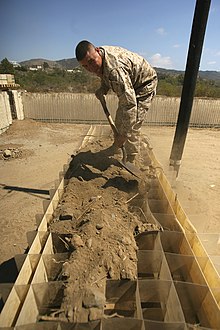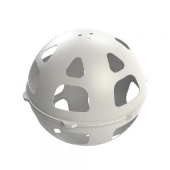
 3
3







 in wood
in wood


 4
4




John Daley Bendigo, Australia The Enemy of progress is the hope of a perfect plan
Benefits of rainfall collection https://permies.com/t/88043/benefits-rainfall-collection
GOOD DEBT/ BAD DEBT https://permies.com/t/179218/mortgages-good-debt-bad-debt
 3
3




 I was hoping someone with more knowledge than me could bring people up to speed on both a technology and attitude that I assume is uncommon - because I had no idea of this years ago. My thoughts were focused on cob and strawbale and rammed earth and i'd never imagined of a tech that could basically cut in half the thickness of driveway and parking area meaning half the cubic volume of hauled material, less labor (cuz less stuff to move and spread about), and less total cost.
I was hoping someone with more knowledge than me could bring people up to speed on both a technology and attitude that I assume is uncommon - because I had no idea of this years ago. My thoughts were focused on cob and strawbale and rammed earth and i'd never imagined of a tech that could basically cut in half the thickness of driveway and parking area meaning half the cubic volume of hauled material, less labor (cuz less stuff to move and spread about), and less total cost.
 2
2




John Daley Bendigo, Australia The Enemy of progress is the hope of a perfect plan
Benefits of rainfall collection https://permies.com/t/88043/benefits-rainfall-collection
GOOD DEBT/ BAD DEBT https://permies.com/t/179218/mortgages-good-debt-bad-debt
 2
2




John C Daley wrote:Brian, do you believe a stick building is suited to your needs?
Its possible to start with a stick building say 14 x 14 ft and then add rooms in either stick, rammed earth or even adobe later.
With Stick builing you need a floor, either stumps etc of a concrete slab.
 2
2








John Daley Bendigo, Australia The Enemy of progress is the hope of a perfect plan
Benefits of rainfall collection https://permies.com/t/88043/benefits-rainfall-collection
GOOD DEBT/ BAD DEBT https://permies.com/t/179218/mortgages-good-debt-bad-debt
 3
3




 6
6




 3
3




William Bronson wrote:Consider mechanical concrete:
http://www.mechanicalconcrete.com/uses/gallery/
For a more environmentally friendly version, are any of the geocells made of pure basalt fiber?
John C Daley wrote:Sticking just to the housing situation.
Using screw piles because you like them is a good idea.
Using geo cells under the house site may be a waste of cells, gravel and time.
Use of geo cells will not necessarily save the volume of gravel used, the cells prevent the gravel or soil from being moved around.
Saana Jalimauchi wrote:Oh Permies, always giving me info about the stuff I even didn’t know I needed!
I’m going to make a path from our house to our little field that I’m going to transform into a garden. However the field is in a lot lower level than the house and currently the drop is too steep for a wheelbarrow or even walking with ease, so I have to make a
Sebastian Köln wrote:Hm... What happens with the material later?
If it is plastic or metal with holes, then the roots will grow between the cells, so it will be impossible to remove them.
And for trees they may not be big enough?
 1
1




John Daley Bendigo, Australia The Enemy of progress is the hope of a perfect plan
Benefits of rainfall collection https://permies.com/t/88043/benefits-rainfall-collection
GOOD DEBT/ BAD DEBT https://permies.com/t/179218/mortgages-good-debt-bad-debt








John Daley Bendigo, Australia The Enemy of progress is the hope of a perfect plan
Benefits of rainfall collection https://permies.com/t/88043/benefits-rainfall-collection
GOOD DEBT/ BAD DEBT https://permies.com/t/179218/mortgages-good-debt-bad-debt
 2
2




 1
1




Douglas Alpenstock wrote:I don't buy that this is the solution that solves all problems. That's a little too close to "marketing" for my taste.
It's not an invalid concept, though. Personally, I'd bet it won't take long for permies/homesteaders who are rich on innovation and energy, and slim on cash, to replicate the effect without leaving manufactured debris in the soil. My 2c.
 2
2




John Daley Bendigo, Australia The Enemy of progress is the hope of a perfect plan
Benefits of rainfall collection https://permies.com/t/88043/benefits-rainfall-collection
GOOD DEBT/ BAD DEBT https://permies.com/t/179218/mortgages-good-debt-bad-debt

 3
3





Failure is a sign of activity and learning. It had nothing to do with under achievement
I never want to have a team member who has never failed - They are not doing!! 👍

|
His name is Paddy. Paddy O'Furniture. He's in the backyard with a tiny ad.
The new permaculture playing cards kickstarter is now live!
https://www.kickstarter.com/projects/paulwheaton/garden-cards
|








